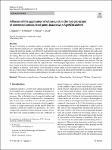Item Infomation
Full metadata record
| DC Field | Value | Language |
|---|---|---|
| dc.contributor.author | Wojarski, L. | - |
| dc.contributor.author | Tillmann, W. | - |
| dc.contributor.author | Ulitzka, H. | - |
| dc.date.accessioned | 2023-08-25T02:02:45Z | - |
| dc.date.available | 2023-08-25T02:02:45Z | - |
| dc.date.issued | 2023 | - |
| dc.identifier.uri | https://link.springer.com/article/10.1007/s40194-023-01573-9 | - |
| dc.identifier.uri | https://dlib.phenikaa-uni.edu.vn/handle/PNK/8932 | - |
| dc.description | CC-BY | vi |
| dc.description.abstract | The poor wettability of cemented carbides by molten metals as well as the different material properties compared to steel makes thermal joining process challenging. In this regard, innovative ultrasonic-assisted induction brazing is capable of joining the materials quickly, cost-effectively and without using environmentally hazardous fluxes. Instead, the oxide scales are broken up within the joining process due to ultrasonic-induced cavitation in the molten filler alloy and hence promote the wetting. However, since the use of ultrasound in brazing steel/cemented carbide joints is still insufficiently investigated, there is still a need to explore the fundamental influences of ultrasound on the brazing process. In this work, the effect of ultrasound on the microstructure of the brazed joints and the diffusion depth of different elements were analysed. | vi |
| dc.language.iso | en | vi |
| dc.publisher | Springer | vi |
| dc.subject | cemented carbide | vi |
| dc.subject | thermal joining process challenging | vi |
| dc.title | Influence of the application of ultrasound on the microstructure of cemented carbide/steel joints brazed with Ag49ZnCuMnNi | vi |
| dc.type | Book | vi |
| Appears in Collections | ||
| OER - Khoa học Vật liệu, Ứng dụng | ||
Files in This Item:

